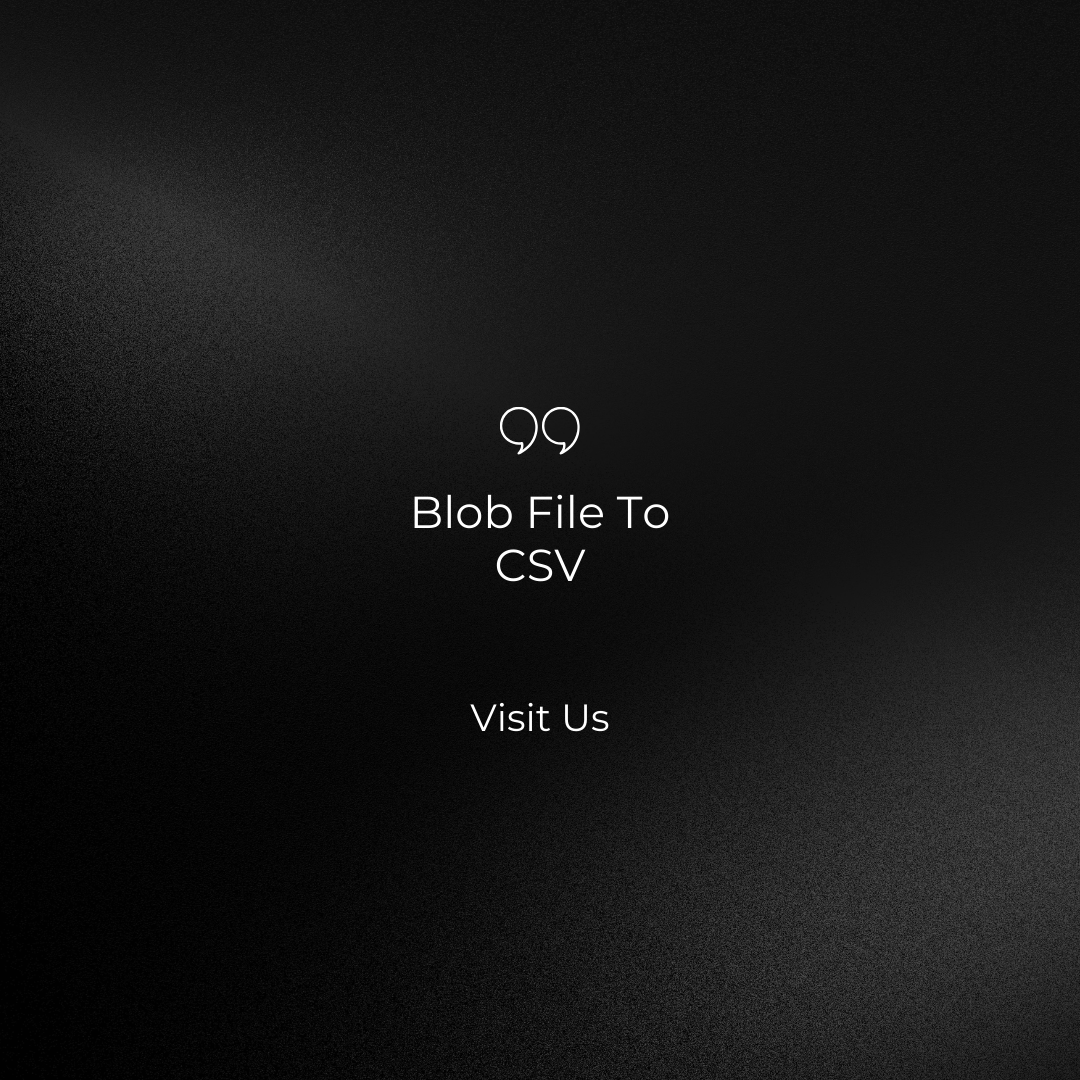In the realm of data analysis and management, it's crucial to have data in a format that's easily accessible and interpretable. Blob files, or Binary Large Objects, are used to store various types of data, including images, documents, and multimedia files. While Blob files are versatile for storage, they are often not the best choice for data analysis. That's where the CSV (Comma-Separated Values) format comes in, offering simplicity and widespread compatibility. In this blog post, we'll explore how to convert Blob files to CSV efficiently, discussing the reasons behind this transformation and providing you with clear step-by-step instructions.
Table of Contents
- Understanding Blob Files
- Why Convert Blob Files to CSV?
- Method 1: Using Python and Pandas
- Step 1: Importing Essential Libraries
- Step 2: Retrieving Blob Data
- Step 3: Saving as CSV
- Method 2: Utilizing Excel
- Step 1: Launching Excel and Creating a Worksheet
- Step 2: Importing Blob Data
- Step 3: Formatting and Saving as CSV
- Method 3: Online Converters
- Step 1: Finding a Suitable Online Conversion Tool
- Step 2: Uploading and Converting Blob Files
- Step 3: Downloading the Resulting CSV
- Conclusion
1. Understanding Blob Files
Before we embark on the journey of conversion, let's grasp the fundamentals of Blob files. These files are binary data types commonly used in databases to store non-textual data, like images, audio, and videos. They are typically represented as a single binary object, making them efficient for data storage.
2. Why Convert Blob File to CSV?
CSV files offer several advantages that make them ideal for data analysis:
- Simplicity: CSV files are straightforward, organized into rows and columns, which aligns well with tabular data structures.
- Compatibility: Most data analysis tools and databases support CSV, ensuring seamless integration into your workflow.
- Ease of Sharing: CSV files are human-readable and can be opened with a wide range of applications, simplifying data sharing.
3. Method 1: Using Python and Pandas
For those comfortable with programming, Python and Pandas provide a robust solution:
-
Step 1: Import the necessary libraries, including Pandas and SQLite (assuming your Blob data is stored in a SQLite database).
-
Step 2: Establish a connection to the database, retrieve the Blob data, and load it into a Pandas DataFrame.
-
Step 3: Save the DataFrame as a CSV file, making it ready for analysis in your preferred data analysis tool.
4. Method 2: Utilizing Excel
If you prefer a user-friendly approach, Microsoft Excel is your ally:
-
Step 1: Open Excel and create a new worksheet.
-
Step 2: Import the Blob file into Excel.
-
Step 3: Format the data to your liking and save it as a CSV file, ensuring compatibility with your chosen data analysis tool.
5. Method 3: Online Converters
For a quick and hassle-free solution, online converters come to the rescue:
-
Step 1: Search online for "Blob to CSV converter" to find a suitable tool.
-
Step 2: Upload your Blob file and follow the on-screen instructions.
-
Step 3: Download the resulting CSV file, now ready for analysis.
Conclusion
Converting Blob files to CSV format simplifies data analysis and sharing. Whether you prefer the programmatic power of Python, the user-friendly interface of Excel, or the convenience of online converters, you now have the knowledge and tools to perform this transformation efficiently. Choose the method that suits your needs and unlock the potential of your Blob data in the versatile CSV format. Happy analyzing!


